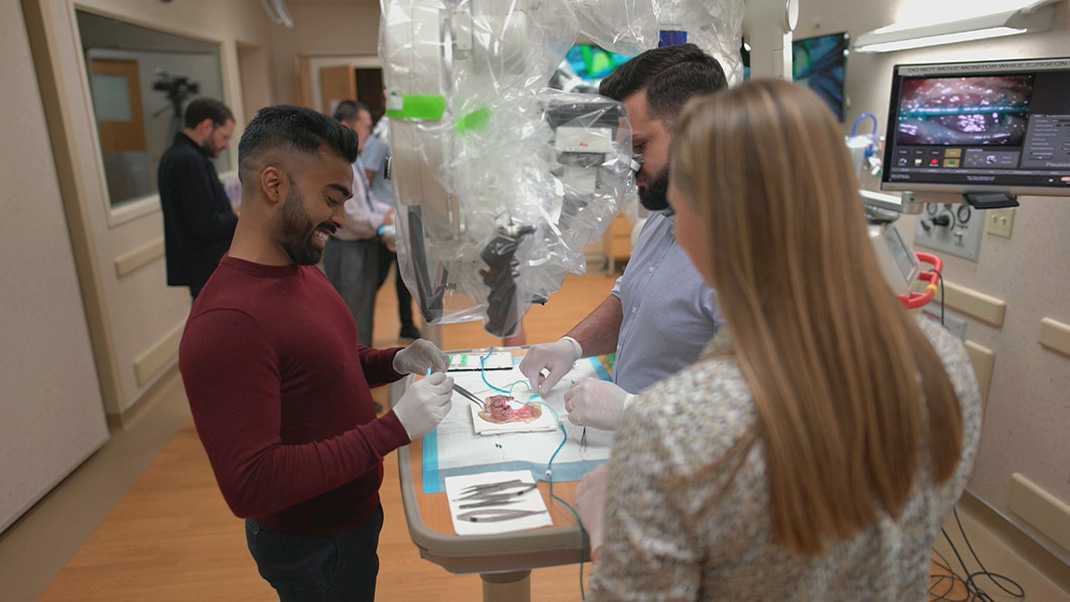John Tolley, May 21, 2020
Aided by magnifying loupes and arteriotomy tools, a surgeon-to-be carefully and precisely stitches closed the wall of a major blood vessel. Her hands move gracefully; they must for this kind of surgery. And soon, blue blood resumes pumping through this vessel.
But this isn?t an actual surgery. Rather it is a low-stakes training simulation, one devised by physicians at the University of Wisconsin School of Medicine and Public Health. The blue blood is a blue saline solution perfused by way of gravity. And the patient? A common chicken thigh you?d pick up at the grocery store.
?We have to develop methodologies to train residents in the laboratory, before they go into the OR, because this is one of the most technically challenging operations that we do as plastic surgeons,? explains Dr. Samuel Poore, associate professor of surgery in the division of plastic and reconstructive surgery.
?The blue blood chicken thigh simulator use utilizes a chicken thigh where we're able to put a canula in the femoral artery um on both ends of it and then we profuse the chicken thigh with saline that's colored with blue food coloring. And because of this, we can really simulate the natural flow of blood across the anastomosis or where we've connected the blood vessels.?
Surgeon Weifeng Zeng developed the practice procedure along with Poore and a team of colleagues at Wisconsin. The goal is to have surgical residents prepared and proficient in microvascular surgery before they enter and operating room with a human patient.
The team of physicians chose chicken thighs for two reasons: their ubiquity and their human-like vasculature. Both the size of the chicken?s femoral artery and its consistency, or feel, make it the ideal medium for training surgical residents.
?One of the really cool things about the chicken thigh is we can find branches off of the femoral vessels that are almost the same size as the lymphatic [vessels] that we're suturing,? says Poore. ?The stitch we use is smaller than a human hair and you can't see it without a microscope. That's really an impossible thing to teach in the OR, requiring repetition and a lot of practice and because of the blue blood simulator, we're able to do that in the lab before going in to the OR.?
For third year resident Kishan Thadikonda, the experience provided by the blue-blood chicken thigh simulation model is invaluable.
?There's really no there's not great simulation models to do that, so a lot of times you're learning for the first time when you're in the operating room,? says Thadikonda. ?Having a model like this is fantastic because at least you have the basic skills down. You understand how to set yourself up for success so that when you do go in the operating room your muscle memory kicks in and you can do some of these things without so much anxiety before each step.?







 See what's coming up live on B1G+ every day of the season at BigTenPlus.com.
See what's coming up live on B1G+ every day of the season at BigTenPlus.com. 